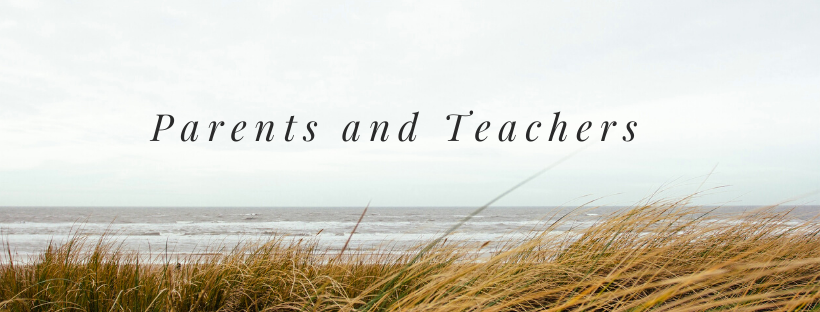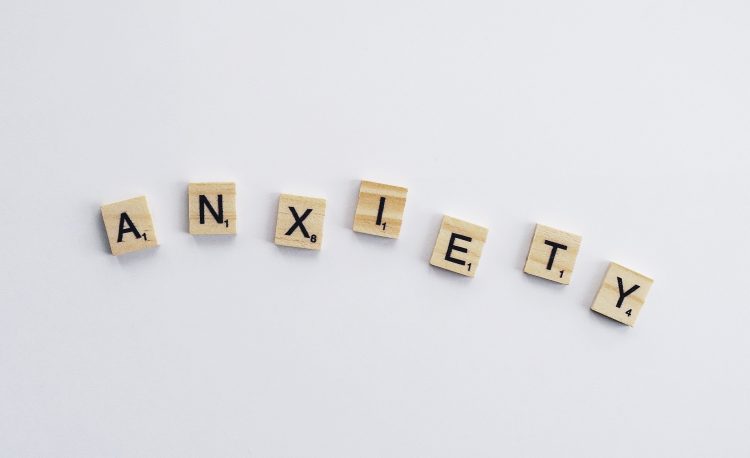General Anxiety Disorder is one of the most common psychological disorders among school-age children. I hope the reader finds this post helpful in that it gives the official DSM-5 definition, what the disorder looks like, how parents and teachers can help someone with general anxiety disorder and resources for using in the classroom and websites for further reading.
Official DSM – 5 Description:
“The essential feature of generalized anxiety disorder is excessive anxiety and worry (apprehensive expectation) about a number of events or activities. The intensity, duration, or frequency of the anxiety and worry is out of proportion to the actual likelihood or impact of the anticipated event. The individual finds it difficult to control the worry and to keep worrisome thoughts from interfering with attention to tasks at hand. Adults with generalized anxiety disorder often worry about everyday, routine life circumstances, such as possible job responsibilities, health and finances, the health of family members, misfortune to their children, or minor matters (e.g., doing household chores or being late for appointments). Children with generalized anxiety disorder tend to worry excessively about their competence or the quality of their performance. During the course of the disorder, the focus of worry may shift from one concern to another.”
Diagnostic and Statistical Manual of Mental Disorders: Diagnostic and Statistical Manual of Mental Disorders, Fifth Edition. Arlington, VA: American Psychiatric Association, 2013.
Here is a 2-3 minute video on the Symptoms and Strategies for Generalized Anxiety Disorder. It uses cartoon characters and simple language to help communicate with young people.

All people experience worry and fear. Generalized Anxiety Disorder occurs when a person has an excessive amount of worry or fear in one or more ways: intensity (how much it takes over your life), duration (how long it lasts) and frequency (how many times you experience it).
Symptoms may include:
- excessive worry
- being tired
- unable to sleep
- irritability
- hard to focus
- restlessness
- unpredictable behavior
- missing/skipping class
Again, many of us face these symptoms over our lifetime. One of the key differences is that these symptoms will cause impairment in the person’s everyday life.
Diagnosis:
- Doctors may order a physical exam, blood and urine tests to rule out any physical cause of the patient’s symptoms.
- The Penn State Worry Questionnaire is one tool psychologists may use to diagnose Generalized Anxiety Disorder along with the criteria in the DSM -V. Primary Care doctors may also use the GAD-7 screening tool.
- There are medical conditions and medications that cause anxiety which would also need to be considered.
Treatment:
- The parent/guardian, child and doctor will come up with a treatment plan
- Treatment will include: therapy, lifestyle changes, medication or a mixture of these options.

Academic: Students with anxiety may try to avoid school or friends at school. This avoidance can lead to poor academic achievement. Losing class time has a direct effect on academic achievement in most students and sometimes causes a snowball effect. The student is anxious and misses class which makes them more anxious when he or she struggles with the next lesson. On the flip side, from my own personal experience many of my bright and/or gifted students show signs of anxiety through perfectionism. They feel like they must obtain near 100% on everything. For these students, I stress a goal of reaching excellence and not perfection.
Social-Emotional: Sometimes anxiety results from under-developed social-emotional skills. ” Self-regulation, negative thought stopping, perspective taking, executive functioning, and flexible thinking” are five skills that can be taught in order to help overcome the anxiety.
Sometimes students with anxiety miss out on field trips and other social activities. It is easy to see the 100% bright student as a perfect kid when really he or she is struggling greatly under the pressure.
Career Development: Young people with anxiety can overthink and analyze to an extreme. These characteristics could be used to gear someone to a job that can utilize these qualities. These jobs include: house-building careers like plumber or electrician, education careers like teacher or professor, and research careers such as medicine or science.

Parents: Our diet affects not only our physical healthy but our mental health as well. Some foods help balance serotonin and mood such as eggs, salmon, turkey, cheese, nuts, seeds, pineapples and tofu.
Sleep is another major contributor to anxiety which starts a cycle of can’t sleep, anxious and irritable because you can’t sleep, then you can’t sleep. There are some steps that we can take at home to help us or your child sleep:
- Exercise: Get moving! Outside or inside, kids need to move. Fitness Blender (older kids) and Go Noodle (younger kids) have a lot of quality videos to help get moving.
- Manage the room: no screens, little to no light (black-out curtains help), quiet and cool
- Drink: stay hydrated throughout the day, but limit caffeine before 12pm and limit drinks 1-2 hours before bedtime if the child is waking up in the middle of the night to go to the bathroom often
- Calm: Headspace is a great app that has sound and stories to help fall asleep, yoga, meditation and writing a journal can help to create a soothing mental state before bed
- Ask for help from a counselor or medical doctor
Teachers: How many of your students have an anxiety disorder? When I researched the numbers, there are two different answers. The CDC states that 7.1% of school-age children have been diagnosed with anxiety. However, the Child Mind Institute believes based on interviews that 31.9% of school age children have an anxiety disorder.
As a teacher – I want to warn teachers to NOT diagnose students. We are not trained. However, we can be aware that anxiety is one of the largest mental health problems in students today. We can use the resources I have listed below to help students that you may think have anxiety or already diagnosed with anxiety. We can teach coping strategies to all students.
Resources
Coping Strategies for Supporting Students. – this is a 16 page document of a list of strategies with videos and clear explanations.
List of 100 Coping Strategies – maybe have this list in a Calming Corner of your house or classroom; or put each one on a Popsicle stick to choose at random
Peer-Reviewed Research:
A pilot study conducted in Spain showed “significant improvements” in Generalized Anxiety Disorder when using Mindfulness-Based Interventions. The researchers also used a Virtual Reality Mindfulness-Based Interventions which showed significant improvements plus stuck to the program longer than the other group. What are the Mindfulness-Based Interventions? These interventions were set up as modules scheduled once per week for 90 minutes and consisted of an introduction, meditations (full body and breathing), radical acceptance, compassion concept and review. The VR group received the same modules and also had 10 minutes of DBT® VR MindfulRiverWorld.
Navarro-Haro, M. V., Modrego-Alarcon, M., Hoffman, H. G., Lopez-Montoyo, A., Navarro-Gil, M., Montero-Marin, J., …Garcia-Campayo, J. (2019). Evaluation of a Mindfulness-Based Intervention With and Without Virtual Reality Dialectical Behavior Therapy[R] Mindfulness Skills Training for the Treatment of Generalized Anxiety Disorder in Primary Care: A Pilot Study. Frontiers in Psychology. Retrieved from https://0-link-gale-com.bridges.searchmobius.org/apps/doc/A571443863/PPPC?u=st42458&sid=PPPC&xid=e3be0028
A meta-analysis was conducted to discover how effective medication, psychology treatments or a mixture of the two prove the most beneficial to treating anxiety disorders. The studies included a total of 37,333 patients. Surprisingly, medication had a larger effect size than psychotherapies. Serotonin-noradrenaline reuptake inhibitors showed the largest effect size out of the medications with an ES of 2.25. Mindfulness exercises was the psychotherapy with the largest effect size of 1.56. I was again surprised that the combination of medicine and psychotherapies had an effect size of 2.12 which is lower than medication alone.
Bandelow, B., Reitt, M., Röver, C., Michaelis, S., Görlich, Y., & Wedekind, D. (2015). Efficacy of treatments for anxiety disorders: a meta-analysis. International clinical psychopharmacology, 30(4), 183–192. https://doi.org/10.1097/YIC.0000000000000078
Motivational Interviewing coupled with Cognitive-Behavior Therapy reduced severe generalized anxiety disorder particularly in the long-term. The researchers noted that after one session there was no difference in outcome, but after a year of treatment, those patients receiving motivational interviewing and cognitive-behavior therapy “…did much better than the CBT-only patients.”
Henny A. Westra, Michael J. Constantino, Martin M. Antony. Integrating Motivational Interviewing With Cognitive-Behavioral Therapy for Severe Generalized Anxiety Disorder: An Allegiance-Controlled Randomized Clinical Trial.. Journal of Consulting and Clinical Psychology, 2016; DOI: 10.1037/ccp0000098
Links for More Information:
Anxiety and Depression Association of America – Anxiety Disorder or just a phase?
Child Mind Institute – Generalized Anxiety Disorder
References
American Psychiatric Association. (2013). Anxiety Disorders. In Diagnostic and statistical manual of mental disorders (5th ed.).
https://www.healthline.com/health/healthy-sleep/foods-that-could-boost-your-serotonin
https://childmind.org/2015-childrens-mental-health-report/
Fresco, D. M., Mennin, D. S., Heimberg, R. G., & Turk, C. L. (2003). Using the Penn State Worry Questionnaire to identify individuals with generalized anxiety disorder: a receiver operating characteristic analysis. Journal of behavior therapy and experimental psychiatry, 34(3-4), 283–291. https://doi.org/10.1016/j.jbtep.2003.09.001
https://childmind.org/downloads/2015%20Childrens%20Mental%20Health%20Report.pdf
https://www.cdc.gov/childrensmentalhealth/features/anxiety-depression-children.html#:~:text=Anxiety%20and%20depression%20affect%20many,1.9%20million)%20have%20diagnosed%20depression.
http://www.ascd.org/publications/newsletters/education-update/aug17/vol59/num08/Helping-Ease-Student-Anxiety.aspx

